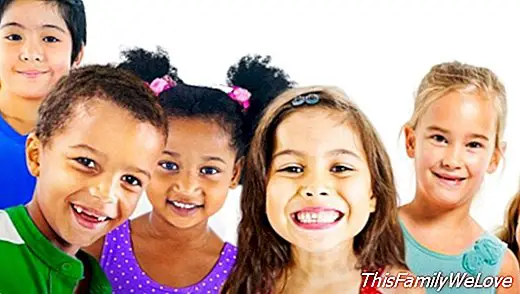Spanish children, the most satisfied of the OECD

How is life going on? is the title of the 2015 welfare measurement report just released by the Organization for Economic Cooperation and Development (OECD). This organization has investigated the living conditions of the inhabitants of the different OECD countries, paying particular attention to the well-being of children and adolescents. The main conclusion reached by this organization is that Spanish children and adolescents are the most satisfied with their lives and those who feel healthier, but also highlights the stress generated by school duties to this group.
10 aspects that measure the well-being of children and adolescents
The report describes ten basic aspects of their lives:
- Conditions of families:
1. Income and wealth
2. Employment and salary
3. Housing
4. Quality of the environment
- Specific welfare conditions for children:
5. Health
6. Education and skills
7. Social Relations
8. Civic commitment and governance
9. Personal Security
10. Subjective well-being
Well-being under examination in OECD countries
The results of the report point out that most children grow up in a friendly social environment and many of them are socially participatory. In OECD countries, 1 in 7 children lives in poverty and almost 10% say they are victims of bullying at school. According to this report, there are "striking inequalities in the well-being of children related to family socioeconomic status."
1. Socioeconomic situation. Children from families with greater resources have better health, higher competencies, greater civic commitment, and better relationships with their parents and peers. Inequalities of welfare between adults become inequalities of opportunity for their children. "Children in Luxembourg, Norway and Switzerland have 6 times more disposable income than the average in Mexico, and Spain is below the average.
2. Deaths due to self-inflicted injuries. The rate of self-inflicted injuries per 100,000 children in Spain barely rises from zero children. This is one of the lowest rates in Greece, compared to 2 children per 100,000 from New Zealand or Ireland, who lead the way. In cases of adolescents between 15 and 19 years of age, in Spain we find 2 per 100,000 compared to 17 in New Zealand or 14 in Ireland.
3. Smoking. It already has more incidence among girls than among boys, and in alcohol consumption we are slightly above the average in the range of 13 to 15 years.
4. PISA reading scores. They emphasize that Japan and South Korea are the ones that obtain better averages, while Chile and Mexico have the lowest. Spain is the seventh country by the tail of the 28 of the EU, and below the average of the OECD.
5. Inactivity among young people. Young people between 15 and 19 years who neither work, nor study, nor are in training -the famous ninis- in Spain are more than 10%, being the fourth by the tail. Only Turkey, Mexico and Italy surpass us.
6. School tasks. The stress that the duties generate in our children makes us occupy worrisome positions. In addition, our students are second in the OECD (with more than 20%) who say they feel more pressure for homework.
So that Spain is placed in an intermediate position when considering all the indicators together. And even with everything, our own children are placed as the most satisfied with their lives, followed by Dutch and Icelandic children.
Sara Pérez




